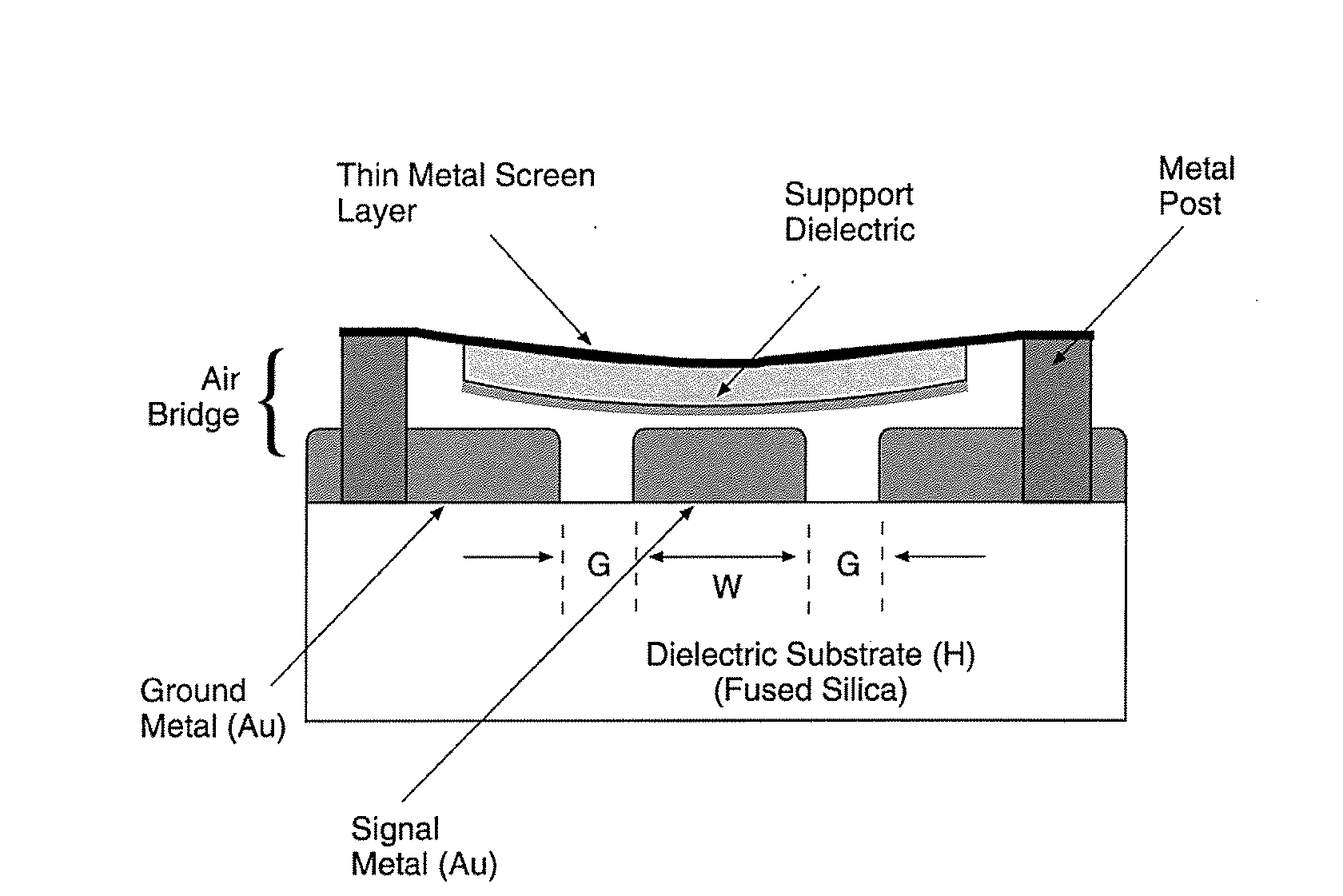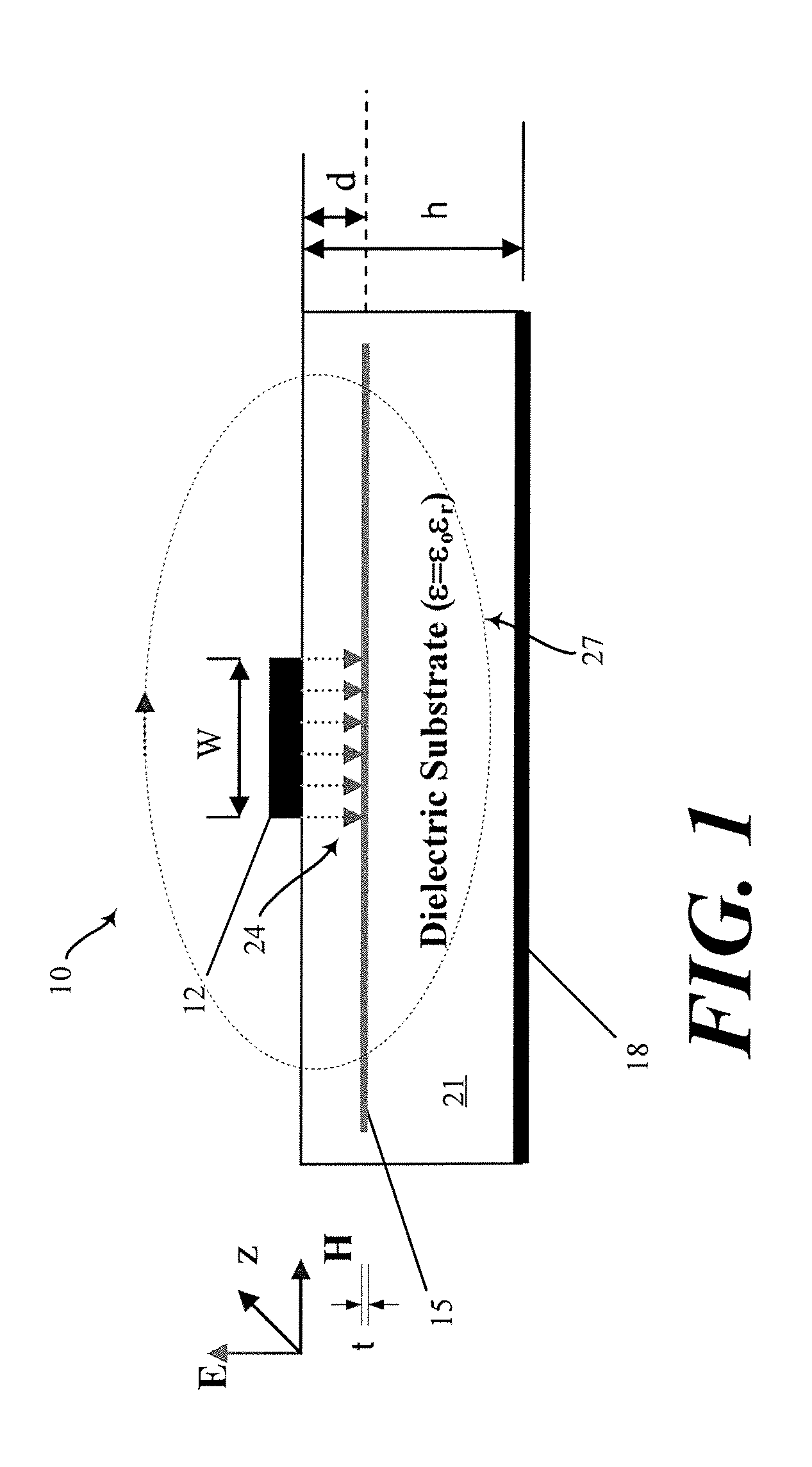Tunable millimeter-wave MEMS phase-shifter
a phase shifter and millimeter-wave technology, applied in waveguides, delay lines, electrical equipment, etc., can solve the problems of low dispersion, low loss, compact size, etc., and achieve the effect of large tuning capacity and compact siz
- Summary
- Abstract
- Description
- Claims
- Application Information
AI Technical Summary
Benefits of technology
Problems solved by technology
Method used
Image
Examples
Embodiment Construction
[0016]In wave theory, an antenna can be created to shape a radiated signal by energizing elements of an antenna with signals that interfere with one another. An antenna array is a plurality of antenna elements coupled to a common source or load to produce a directive radiation pattern. Usually the spatial relationship also contributes to the directivity of the antenna. For example, a phased-array is a group of antenna elements radiating signals wherein the relative phases of the respective signals feeding each of the antenna elements are offset relative to one another in such a way that the effective radiation pattern of the array is reinforced in a desired direction and suppressed in undesired directions. Phased-array technology was originally developed by the then-future Nobel Laureate Luis Alvarez during World War II to facilitate a rapidly-steerable radar system to aid pilots in the landing of airplanes in England. Other phased-radiation array technologies, such as aperture synt...
PUM
 Login to View More
Login to View More Abstract
Description
Claims
Application Information
 Login to View More
Login to View More - R&D
- Intellectual Property
- Life Sciences
- Materials
- Tech Scout
- Unparalleled Data Quality
- Higher Quality Content
- 60% Fewer Hallucinations
Browse by: Latest US Patents, China's latest patents, Technical Efficacy Thesaurus, Application Domain, Technology Topic, Popular Technical Reports.
© 2025 PatSnap. All rights reserved.Legal|Privacy policy|Modern Slavery Act Transparency Statement|Sitemap|About US| Contact US: help@patsnap.com



